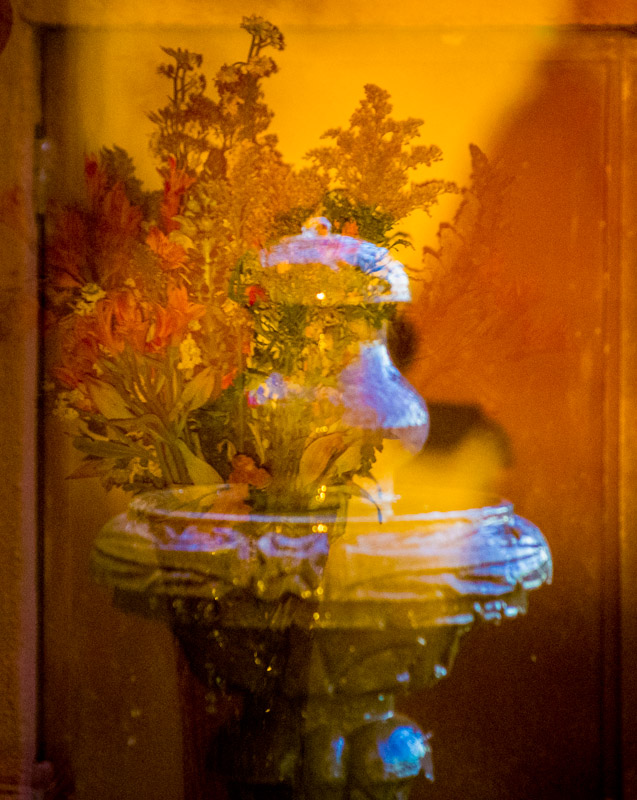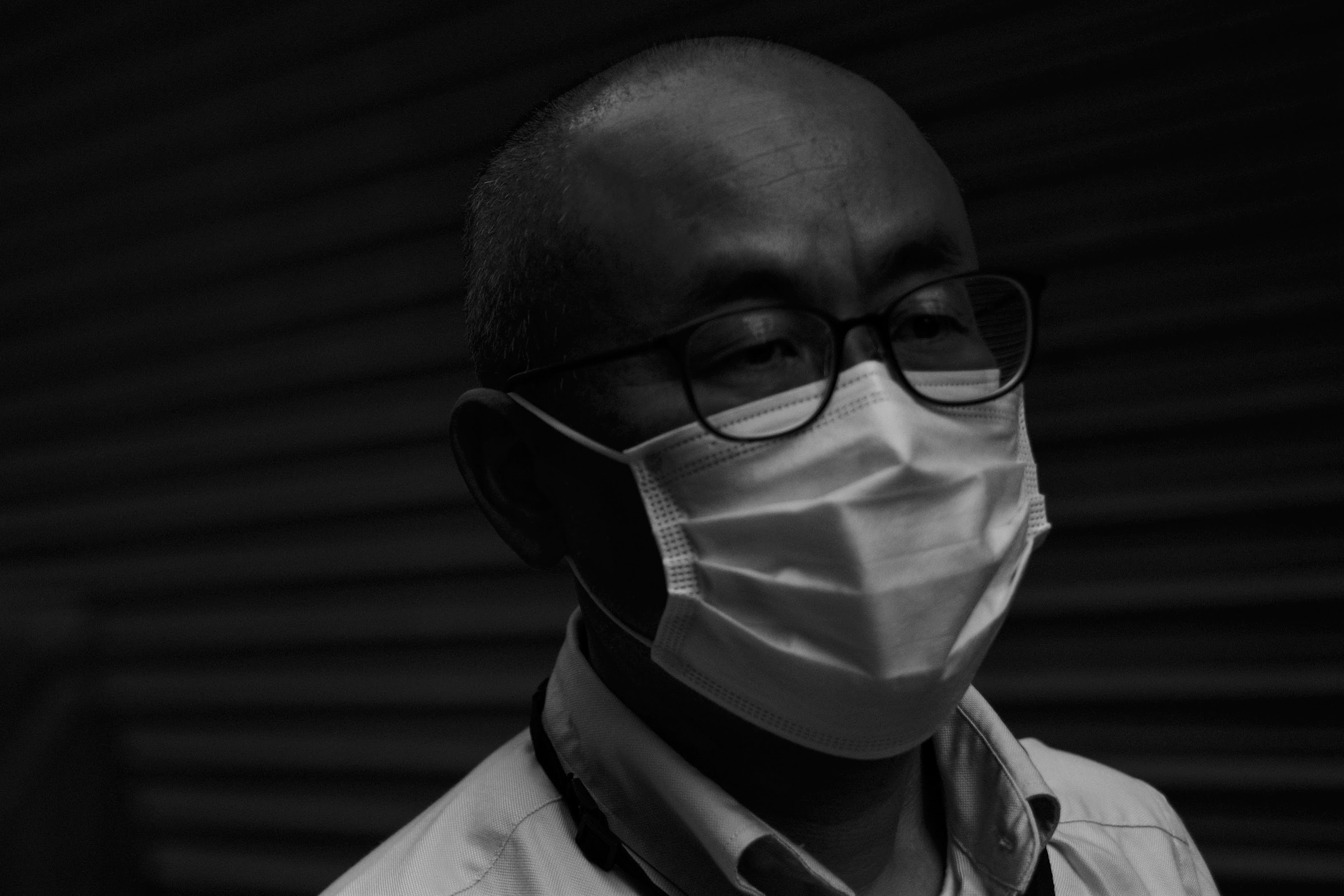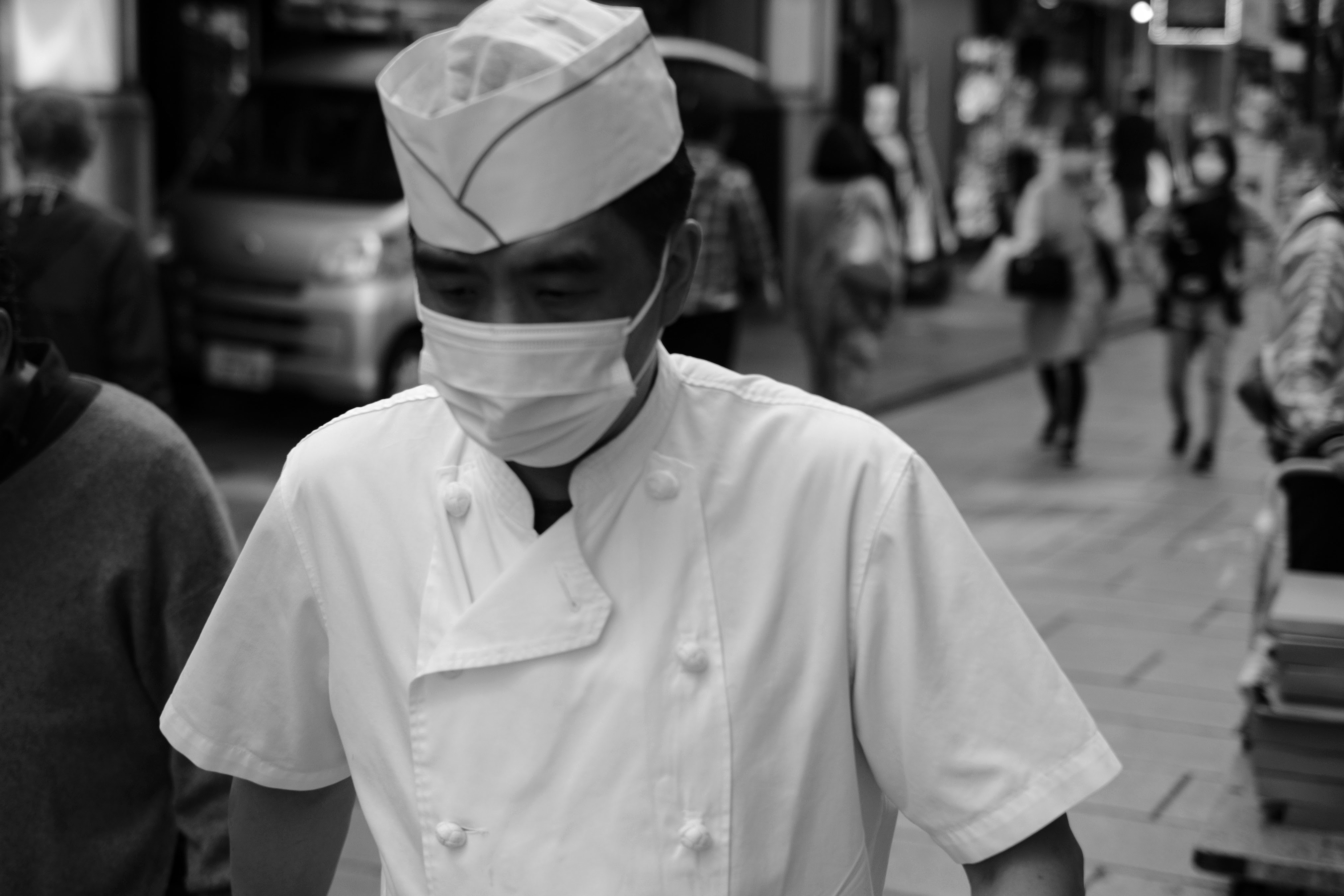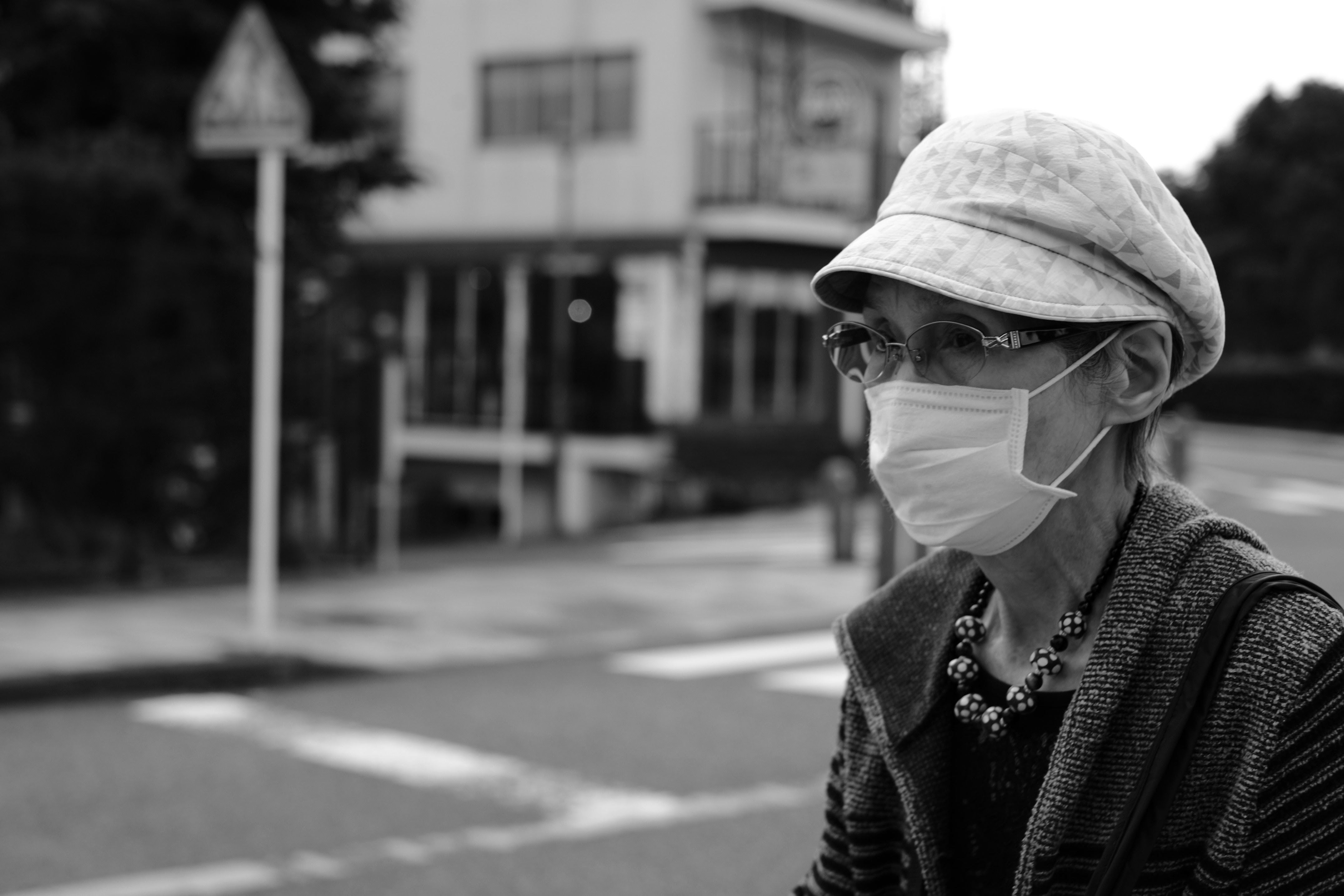newst
Well-known
‘Needy’
Lucky You, deer to prance about
Beautiful ethereal quality to your photo... timeless , classical!
Thank you so much. Sometimes I just like to play with the possibilities.
The deer are a regular visitor here, singly or in groups. It's funny to watch my huskies just stare at them in awe.
Hans Berkhout
Well-known
'Hans Berkhout' :
It can be quite exhausting, investigating all those photos that make me Smile
and If I may ask: What camera, lens, PP were used in your shot... Loved it !
Helen thank you.
Leica M2, Summicron 50/2.0, Panatomic-X, probably 1/4 or 1/2 sec @ f2.0 Dev. in Promicrol (?before your time?). I really didn't know what I was doing, street photography with ISO 32 film.
Same film lens etc for this artist picture (Paris 1963)

helen.HH
A smile & a wink…
Thank You Hans For the rig, processing , & new photo
Did not understand what You meant “ before my time” ???
Do you mean developers , film ??
Giggles, I have been shooting film & processing since 13 years old... way before the digital era
, lol... Preferred Rodinal , then eventually HC110, now DDX. I think most people here view me a film shooter ,because it’s really my true love
Did not understand what You meant “ before my time” ???
Do you mean developers , film ??
Giggles, I have been shooting film & processing since 13 years old... way before the digital era
, lol... Preferred Rodinal , then eventually HC110, now DDX. I think most people here view me a film shooter ,because it’s really my true love
bullterrier
Established
Dear misses Helen Hill.
I use auto exposure on the Tiff file.The darker the raw file,the brighter the tiff,This take some trial and error.I make the tests in smaller resolution,some of the contrast disappear when you have the final jpg.This way I can achieve some digital images that I like,they are sometimes soft, blurry and grainy.
have a nice weekend
I use auto exposure on the Tiff file.The darker the raw file,the brighter the tiff,This take some trial and error.I make the tests in smaller resolution,some of the contrast disappear when you have the final jpg.This way I can achieve some digital images that I like,they are sometimes soft, blurry and grainy.
have a nice weekend
robert blu
quiet photographer
Thanks for all the recent posts... I am sorry I have not written back
I was actually working the last week, something I have hardly done in EIGHT MONTHS, so I was happy to make real money !!
I am getting into the groove, breaking rules
since the 21 angulon does not meter, and exposure compensation makes more problems than less...with the angulon I go by my natural gut/ instinct for metering
here is one I like
where spot on exposure bored me, seemed too pretty film like,
but when I shot it again, I chose to be more creative and I prefer it, very little post processing
a casual nstroll, dark, broody and moody, thats the way I like Miss 21 angulon by Helen Hill, on Flickr
Helen, I find that far too many photos I see on the internet are perfectly exposed with lighting balanced and lit across the whole frame. Making them technically fine, but too often, somewhat boring. I much prefer the sort of image you have posted here with a bit of shadow to add "dimensionality" and life to the scene. So, I like it a lot. Well done.
Excellent photo Helen.
I fully agree with Peter !
I noticed this also in the exhibitons organized by many camera clubs. So many perfect photos, but no soul in them, It's simply like calligraphy exercises!
If I'm not wrong it was Picasso who said he took decades to learn to draw like Michelangelo and then again years to learn to draw like a child!
Working with the light, under or overexposing is another tool the photographer has in his hands, let's use it! Me included of course!
JohnBeeching
Well-known
Helen,
Your posting has led to a very interesting range of responses.
When we take photographs we are both facilitated and constrained by the equipment in our hands. We may or may not envisage the image that we want on the final print at the time of taking the photo. However, what we point the camera at, how we set the camera's controls and how we process the film/file afterwards determine what we end up with, even if some of those steps are left to chance or intuition. Here are two seascapes that illustrate these points.
Sao Sebastião, Brazil. Leica M6, Tri-X.
 Beach at Sao Sebastiao. by John Beeching, on Flickr
Beach at Sao Sebastiao. by John Beeching, on Flickr
Approaching storm on Lindisfarne. Full X-Pro2, 18mm.
 Approaching storm on Lindisfarne by John Beeching, on Flickr
Approaching storm on Lindisfarne by John Beeching, on Flickr
Your posting has led to a very interesting range of responses.
When we take photographs we are both facilitated and constrained by the equipment in our hands. We may or may not envisage the image that we want on the final print at the time of taking the photo. However, what we point the camera at, how we set the camera's controls and how we process the film/file afterwards determine what we end up with, even if some of those steps are left to chance or intuition. Here are two seascapes that illustrate these points.
Sao Sebastião, Brazil. Leica M6, Tri-X.
 Beach at Sao Sebastiao. by John Beeching, on Flickr
Beach at Sao Sebastiao. by John Beeching, on FlickrApproaching storm on Lindisfarne. Full X-Pro2, 18mm.
 Approaching storm on Lindisfarne by John Beeching, on Flickr
Approaching storm on Lindisfarne by John Beeching, on FlickrAxel
singleshooter
The only thing I dislike about ‘digital’
is too perfect, too real and clean a file
Sometimes I keep it but mostly that’s what turns me off to shooting digital
I prefer to do very little or no PP
Just a hint of more or less saturation, contrast, adjust shadows, midtones
Obviously I will need to change & experiment...
So my Question To You:
What are your secrets ?
How do You make your photos more ‘Atmospheric’, softer in feel
I suspect crank up quite abit ISO
Play with exposure ... not always be spot on
What else?...
I think it´s shoot, shoot, shoot digital. In the first time every picture I shot (and liked) with my digicam was -1/3 to -1EV.
Clean or perfect would not be my description. That implies "digital" would do something to the pictures.
I learned how the machine interpretes light situations. So I got a kind of feeling for digital.
What helped was the fact that I never used automatic exposure that much before.
So I did a lot of experiments with simple things like extreme under- and overexposure.
Indeed it is not grain or "film look" what is the key. Neither it´s digital in whole. People tended to zoom in a picture
and find things that they never could see before. Often this fact leaded to unsubstantuated devaluating of pictures
and / or cameras.
Hans Berkhout
Well-known
Thank You Hans For the rig, processing , & new photo
Did not understand what You meant “ before my time” ???
Do you mean developers , film ??
Giggles, I have been shooting film & processing since 13 years old... way before the digital era
, lol... Preferred Rodinal , then eventually HC110, now DDX. I think most people here view me a film shooter ,because it’s really my true love
Helen, sorry for confusion(and by the way,

I thought the Promicrol developer was en vogue (long) before you started shooting. So that led me to "before your time". Let's forget about it.
Apologies for inserting film based pix, your thread question concerns digital I just remember. I Shoot film 99%, enjoy it and am happy with results. Minimal digital. Example herewith: Pentax K5, da 50-135 lens, ISO 2500. Some sharpening, no noise reduction. PP in LR4
helen.HH
A smile & a wink…
Hey Hans
I don’t mind, be it film / digital examples , all cool
Took no offense At your developer , not sure what you meant... I’m not always on the ball anymore.
I don’t mind, be it film / digital examples , all cool
Took no offense At your developer , not sure what you meant... I’m not always on the ball anymore.
helen.HH
A smile & a wink…
JohnBeeching:
Great Examples...
Both shots are very You ... has a ‘style’, fluid be it film or digi
Lovely !
Great Examples...
Both shots are very You ... has a ‘style’, fluid be it film or digi
Lovely !
helen.HH
A smile & a wink…
Yes Axel;
I no longer think in terms of Concrete composition,
but more in terms of Light / Dark , the way it falls
Auto exposure I am sure is fine for some, but I like to gues and play with exposures no matter which medium o shot with
This quote of yours is perfect:
“ I learned how the machine interpretes light situations. So I got a kind of feeling for digital.
What helped was the fact that I never used automatic exposure that much before.
So I did a lot of experiments with simple things like extreme under- and overexposure.”
I no longer think in terms of Concrete composition,
but more in terms of Light / Dark , the way it falls
Auto exposure I am sure is fine for some, but I like to gues and play with exposures no matter which medium o shot with
This quote of yours is perfect:
“ I learned how the machine interpretes light situations. So I got a kind of feeling for digital.
What helped was the fact that I never used automatic exposure that much before.
So I did a lot of experiments with simple things like extreme under- and overexposure.”
krötenblender
Well-known
Not sure, if he was already mentioned in this thread, but one of my favorite photographers is the great japanese Moriyama Daidō. In the past, he took many pictures with the analog Ricoh GR Series cameras, but in more recent years, he also used several digital compacts. And despite only using Jpeg SOOC, his style is still as rough and "dirty" as it was. SSo, how does he achieve it? According to an interview, I remember (but don't know where...) he pushes contrast to the limit, overexposes highlights and plays with the digital noise (instead of caring about it, as most people do today). So, its the conscious decision for imperfection and to use that as style-element. I love it.
helen.HH
A smile & a wink…
‘Krotenblender’’
Yes, Agreed,
Yum to ‘Stray Dog’, Yum to Daido
I think of all the GRd’s I had , version 1 was the most special !
M
Push and move the boundaries . Thank You !
Yes, Agreed,
Yum to ‘Stray Dog’, Yum to Daido
I think of all the GRd’s I had , version 1 was the most special !
M
Push and move the boundaries . Thank You !
fireblade
Vincenzo.
Not sure, if he was already mentioned in this thread, but one of my favorite photographers is the great japanese Moriyama Daidō. In the past, he took many pictures with the analog Ricoh GR Series cameras, but in more recent years, he also used several digital compacts. And despite only using Jpeg SOOC, his style is still as rough and "dirty" as it was. SSo, how does he achieve it? According to an interview, I remember (but don't know where...) he pushes contrast to the limit, overexposes highlights and plays with the digital noise (instead of caring about it, as most people do today). So, its the conscious decision for imperfection and to use that as style-element. I love it.
Wabi Sabi photography best expresses Daidos style.
“wabi-sabi” is the Japanese/Zen aesthetic of beauty of imperfection, impermanence, and the natural.
Nothing lasts,
Nothing is finished,
Nothing is perfect.
peterm1
Mentor
This is one I worked up recently - as an experiment in grain and texture etc. I processed it in Nik Analog Efex including putting some texture over the background then almost as an afterthought put in some grain using Nik Color Efex. I do not think that in this instance the "grain" closely emulates real film grain though in other shots I think it does. Never the less it shows the kind of effects available if someone wants to experiment with post processing. That's my word for the day - Experiment!


Yokosuka_Mike
Abstract Clarity
Fujifilm Acros film simulation - JPEGs



X-Pro3, Fujinon XF 35mm f1.4 R lens
Acros film simulation
Yokohama, Japan - October 2020
All the best,
Mike
X-Pro3, Fujinon XF 35mm f1.4 R lens
Acros film simulation
Yokohama, Japan - October 2020
All the best,
Mike
JohnBeeching
Well-known
Dear Helen and others,
Something which I think is pertinent to the theme of this conversation.
In the last few weeks I have been using film for the first time for several years. It felt both liberating and constraining - and there was the experience of delayed gratification. In all I shot three films, snapping anything that drew my eye, more for fun than anything else. On looking at them expecting to find random dross, I discovered several that drew me in and felt that the series hung together as a sort of body of work that reflected our times and how I am feeling. Here I present a loose edit from the films in the order in which they were snapped. The photos were taken in Frome, the Somerset market-town where I live, and in Weston-super-Mare, a coastal resort that has seen better days.
Technical details: Nikon F3 (new to me), 50mm (mostly) and 135mm, HP5+, ID-11.
I have posted them on my website: https://johnbeeching.com/postcards
I welcome comments and critical feedback.
John
Something which I think is pertinent to the theme of this conversation.
In the last few weeks I have been using film for the first time for several years. It felt both liberating and constraining - and there was the experience of delayed gratification. In all I shot three films, snapping anything that drew my eye, more for fun than anything else. On looking at them expecting to find random dross, I discovered several that drew me in and felt that the series hung together as a sort of body of work that reflected our times and how I am feeling. Here I present a loose edit from the films in the order in which they were snapped. The photos were taken in Frome, the Somerset market-town where I live, and in Weston-super-Mare, a coastal resort that has seen better days.
Technical details: Nikon F3 (new to me), 50mm (mostly) and 135mm, HP5+, ID-11.
I have posted them on my website: https://johnbeeching.com/postcards
I welcome comments and critical feedback.
John
ray*j*gun
Mentor
I have recently purchased an old Nikon D70 with a very low shutter count (for a song) which has a CCD sensor and only 6 megapixels. I plan to use it in B&W with my older Nikkor lenses to see if I can get close to the look of my M8u and that vintage B&W image. Some of my favorite monochrome images were shot with the M8u and uncoated LTM lenses. Ill post when I get it out on the road and see how it works out.
peterm1
Mentor
I have recently purchased an old Nikon D70 with a very low shutter count (for a song) which has a CCD sensor and only 6 megapixels. I plan to use it in B&W with my older Nikkor lenses to see if I can get close to the look of my M8u and that vintage B&W image. Some of my favorite monochrome images were shot with the M8u and uncoated LTM lenses. Ill post when I get it out on the road and see how it works out.
Do you plan to shoot in RAW and then convert to black and white in post? Speaking personally I had little luck shooting JPG either in black and white or any form with CCD lenses (including those on my old D70s) - the dynamic range was so limited it made it difficult to shoot outside especially where bright sky etc tended to produce a lot of blown highlights. I had much better luck when shooting in RAW then converting after. If you do plan to shoot in jpg / black and white only you may like to try dropping the exposure compensation to -1 or thereabouts to restrict this - of course this may crunch your shadows but I find that looks less objectionable than blown highlights.
JohnWolf
Well-known
Dear Helen and others,
Something which I think is pertinent to the theme of this conversation.
In the last few weeks I have been using film for the first time for several years. It felt both liberating and constraining - and there was the experience of delayed gratification. In all I shot three films, snapping anything that drew my eye, more for fun than anything else. On looking at them expecting to find random dross, I discovered several that drew me in and felt that the series hung together as a sort of body of work that reflected our times and how I am feeling. Here I present a loose edit from the films in the order in which they were snapped. The photos were taken in Frome, the Somerset market-town where I live, and in Weston-super-Mare, a coastal resort that has seen better days.
Technical details: Nikon F3 (new to me), 50mm (mostly) and 135mm, HP5+, ID-11.
I have posted them on my website: https://johnbeeching.com/postcards
I welcome comments and critical feedback.
John
Very nice, John. The aesthetic Helen is after is very different than yours, but I think it's safe to say it would be difficult to get your look from digital--the tonality, grain, and overall organic quality. The noir-ish look is easier with digital (black is black, after all), but digital can't match film's richness in the lighter grays. Your images are good examples. For me that's what really distinguishes them. Not better or worse, but certainly different.
John
Share:
-
This site uses cookies to help personalise content, tailor your experience and to keep you logged in if you register.
By continuing to use this site, you are consenting to our use of cookies.


